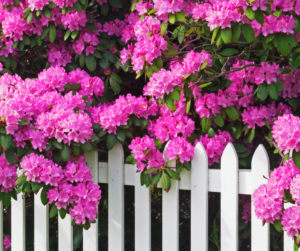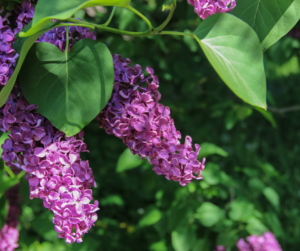Hey there, green-thumb enthusiasts! Today, let’s delve into the delicate art of pruning as we reveal Spring pruning secrets. As spring approaches, our gardening instincts may nudge us to pick up those pruning shears, but hold your clippers! There are some plants out there that prefer a little later pruning schedule. So, grab a cup of tea or joe, settle in, and let’s chat about 11 plants you should never prune in early spring.
- Rhododendrons: These vibrant blooms set their flower buds in late summer and fall, eagerly preparing for their grand spring entrance. Pruning them in early spring risks removing those meticulously prepared buds, resulting in a disappointing bloom season.
- Forsythia: Ah, the harbinger of spring with its cheerful yellow blooms! While forsythias do bloom on old wood, meaning they develop flower buds the previous year, pruning them just after flowering ensures you won’t accidentally snip off next year’s potential blooms.

- Lilacs: Is there anything more nostalgic than the scent of lilacs wafting through the air in spring? These fragrant wonders also bloom on old wood, making them susceptible to bud loss if pruned too early. Hold off on the clippers until after they’ve finished their spring show.
- Magnolias: With their stunning, showy blossoms, magnolias steal the spotlight in any garden. Pruning them in early spring can leave wounds vulnerable to disease and disrupt their natural growth patterns. It’s best to wait until after flowering to trim any unruly branches.
- Hydrangeas: These versatile shrubs offer a kaleidoscope of colors, but their pruning needs vary depending on the type. While some bloom on old wood and should be pruned after flowering, others bloom on new wood and can be pruned in late winter or early spring. Research your specific variety to ensure you’re pruning at the right time.
- Spirea: Known for their cascading clusters of blooms, spireas are a staple in many gardens. Since they bloom on old wood, it’s wise to wait until after flowering to prune, ensuring you don’t accidentally remove next year’s buds.
- Weigela: With their trumpet-shaped flowers and vibrant foliage, weigelas add a pop of color to any landscape. Like spireas, they bloom on old wood, so hold off on pruning until after their spring display to maintain their natural beauty.
- Clematis: These versatile vines offer an array of bloom times and colors, making them a favorite among gardeners. Some varieties bloom on old wood in spring, while others bloom on new wood later in the season. Research your specific type to determine the best pruning schedule.

- Azaleas: With their stunning array of colors, azaleas are a springtime favorite. Like their rhododendron cousins, they bloom on old wood and should be pruned after flowering to preserve their precious blooms.
- Saucer Magnolias: These majestic trees grace us with their goblet-shaped blooms in early spring. Pruning them too early can remove next year’s flower buds, so enjoy their stunning display before considering any pruning needs.
- Japanese Maples: With their delicate foliage and graceful form, Japanese maples are prized for their ornamental value. Pruning them in early spring can cause excessive bleeding of sap, so it’s best to wait until summer or fall for any necessary shaping.
And here’s a pro tip: if you missed the ideal pruning window for any of these plants, don’t fret! While it’s best to prune at the recommended times to maximize blooms and maintain plant health, most plants are resilient and forgiving. Just be sure to make clean cuts with sharp tools, and your garden will likely bounce back beautifully. Remember, gardening is as much about learning from our mistakes as it is about reveling in our successes. Happy pruning, and may your garden flourish!

